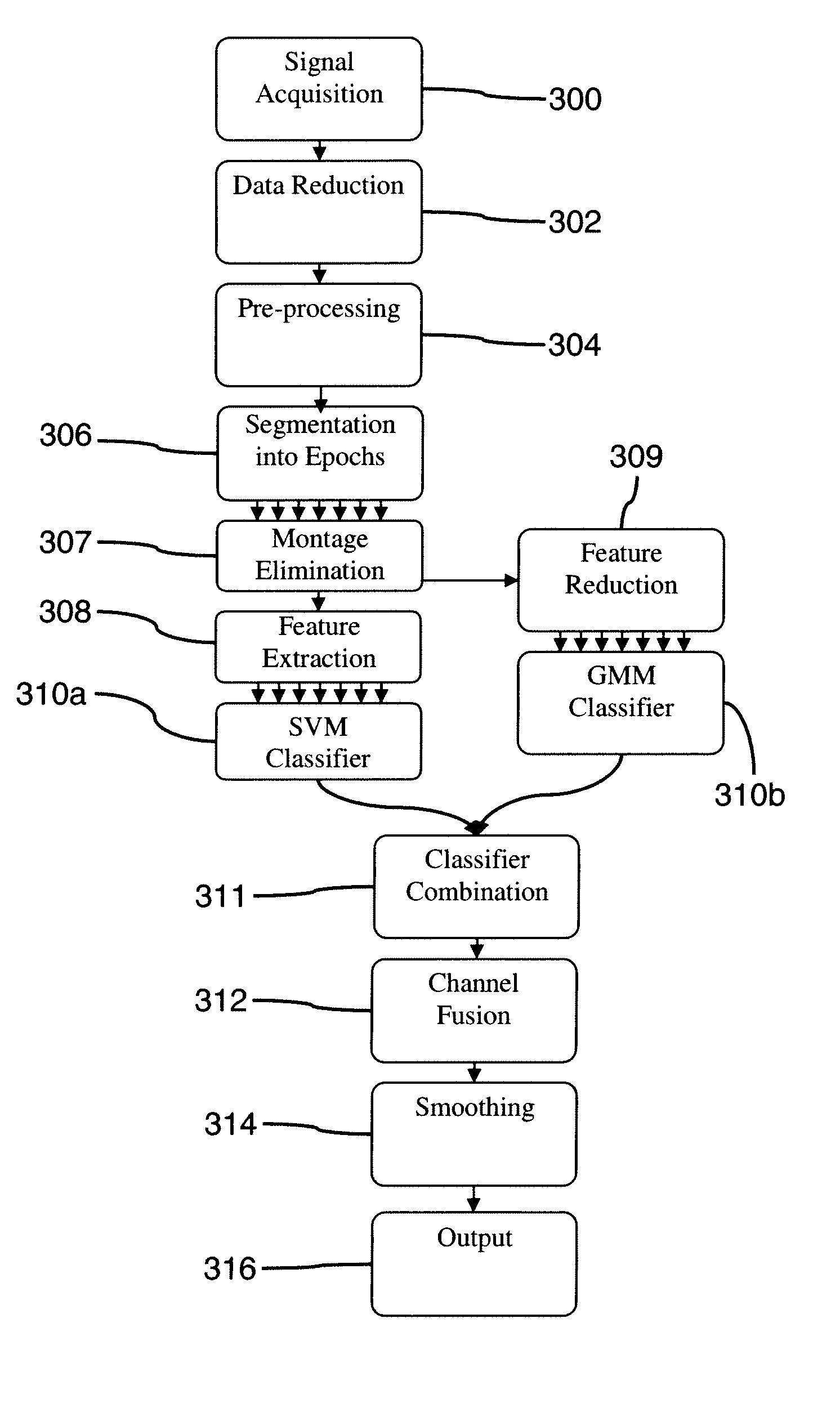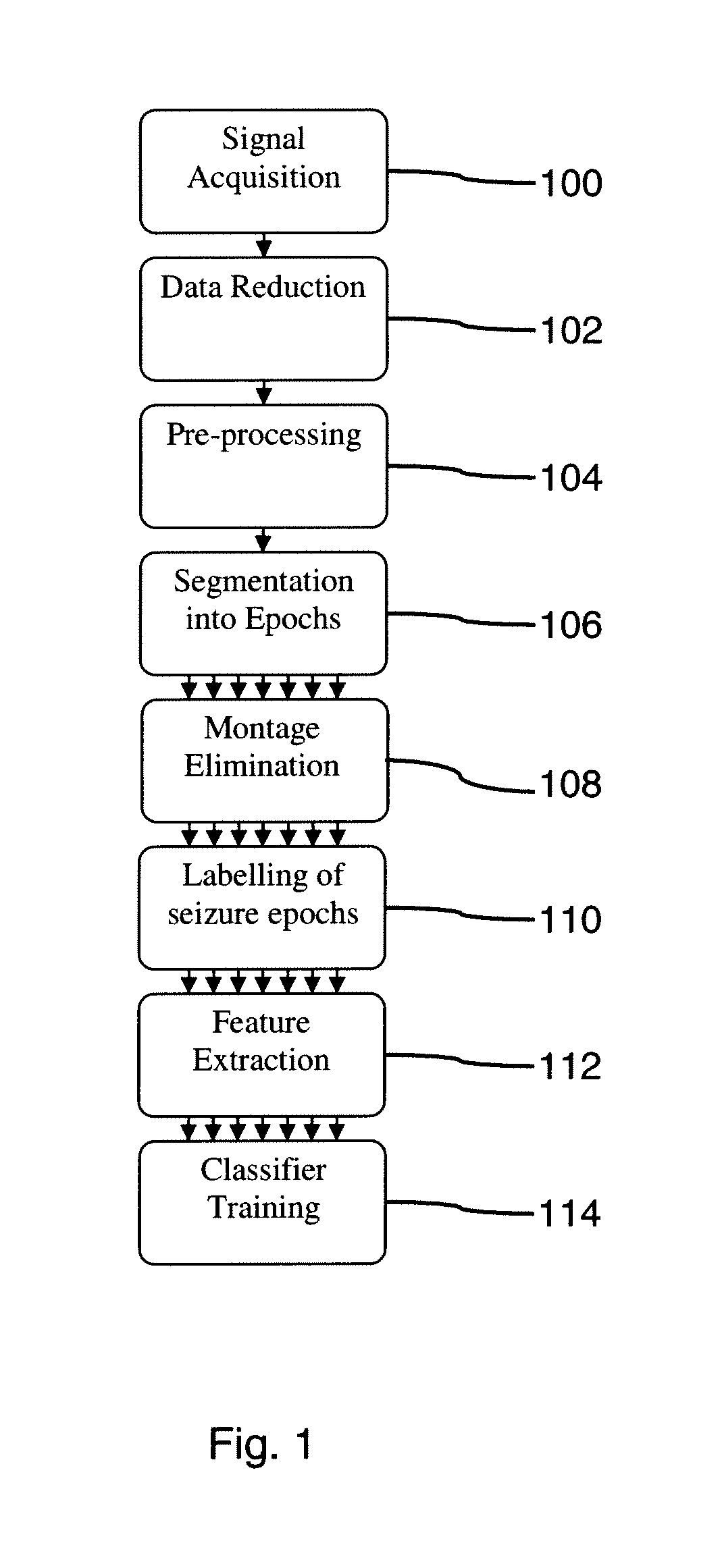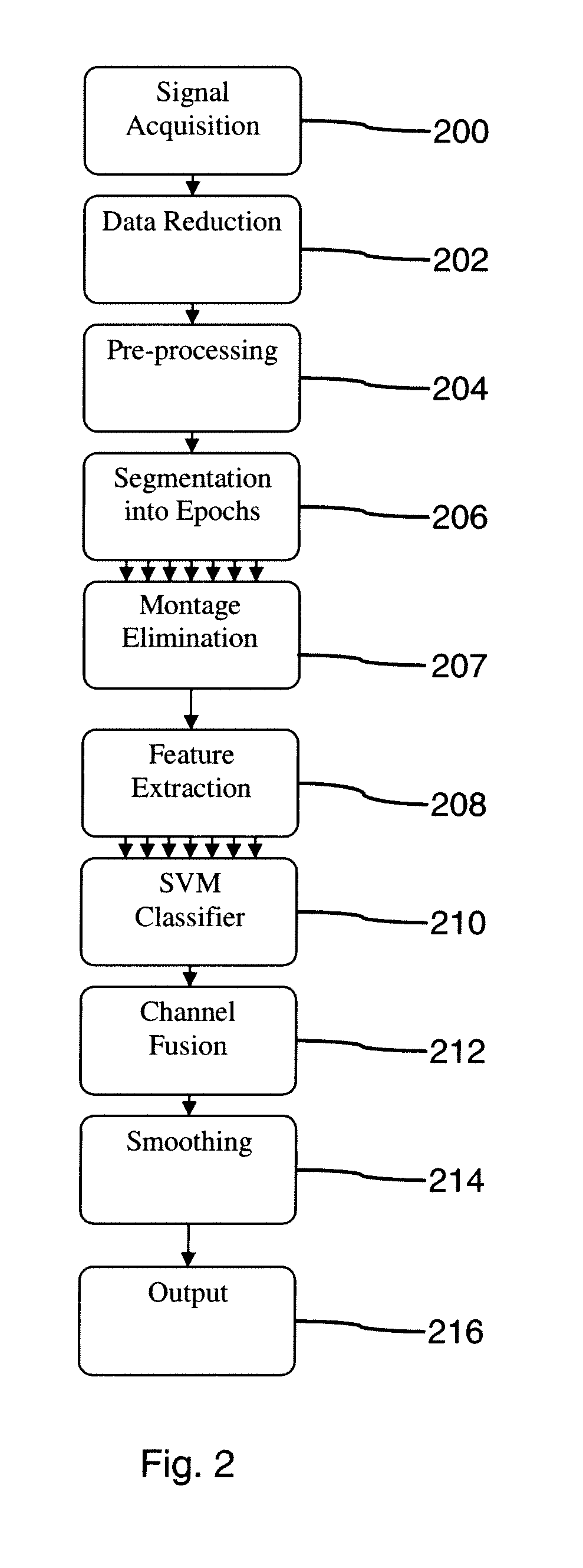Method for the real-time identification of seizures in an electroencephalogram (EEG) signal
an electroencephalogram and real-time detection technology, applied in the field of real-time seizure identification in an electroencephalogram (eeg) signal, can solve the problems of inability to use seizure detection systems, no clinical use proven accurate, and features that take a considerable amount of time to compute, so as to improve classification results, improve accuracy, and improve the effect of real-time seizure identification
- Summary
- Abstract
- Description
- Claims
- Application Information
AI Technical Summary
Benefits of technology
Problems solved by technology
Method used
Image
Examples
Embodiment Construction
[0107]The invention will now be more clearly understood from the following description of an embodiment thereof given by way of example only with reference to the accompanying drawings in which:—
[0108]FIG. 1 is a flow chart of training of the Support Vector Machine; and
[0109]FIG. 2 is a flow chart of the system according to the invention;
[0110]FIG. 3 is a flow chart of an alternative method according to the invention; and
[0111]FIG. 4 is a block diagram of an exemplary system in which the method of the invention may operate.
[0112]Prior to the use of the method of the invention for the real-time detection of seizures in an EEG signal, it is necessary to train the SVM classifier on sets of training EEG data. The training data comprises adult and neonate EEG signals. The training data used consists of EEG data from seventeen neonatal patients and fifteen adult patients. Patients were not selected on any criteria, all available patients having useable data were used so as to maximize the...
PUM
 Login to View More
Login to View More Abstract
Description
Claims
Application Information
 Login to View More
Login to View More - R&D
- Intellectual Property
- Life Sciences
- Materials
- Tech Scout
- Unparalleled Data Quality
- Higher Quality Content
- 60% Fewer Hallucinations
Browse by: Latest US Patents, China's latest patents, Technical Efficacy Thesaurus, Application Domain, Technology Topic, Popular Technical Reports.
© 2025 PatSnap. All rights reserved.Legal|Privacy policy|Modern Slavery Act Transparency Statement|Sitemap|About US| Contact US: help@patsnap.com



